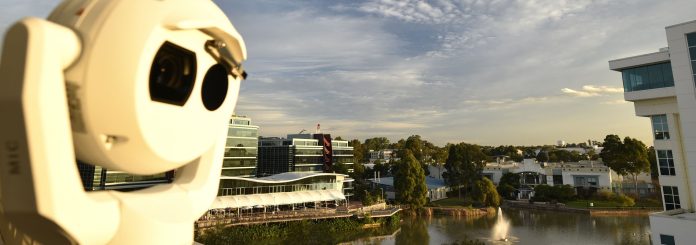Bosch MIC IP Fusion 9000i is another spectacular camera from Bosch. It combines all the power of the MIC IP 7000i optical PTZ with an integrated thermal camera. But what makes it special is that the 9000i synthesizes these camera inputs using metadata, making the transition between thermal and optical viewing operationally seamless while supporting one technology with the other.
WHEN I first tested the Bosch MIC 7000, my reaction was that I wanted one of my own. We test a lot of cameras at SEN but only a handful really grab you. The MIC 7000 was at the forefront of that select group – great sensor, great lens, robust yet compact form factor. Since our first review, the 7000 has been upgraded to the 7000i, and the optical camera system of the 7000i has been integrated alongside a thermal imaging system into the new flagship of the MIC range, the MIC IP Fusion 9000i.
The first question I ask myself when looking at the MIC IP Fusion 9000i on the balcony outside the Bosch Experience Centre at Baulkham Hills in Sydney is what’s different? Certainly, the appearance of the MIC 9000i is bulkier than the 7000i mounted beside it. The MIC IP Fusion 9000i is taller and has wider shoulders to cater for optical and thermal camera systems. But it’s when you start mining the MIC IP Fusion 9000i specifications list that the power and depth of this solution become apparent. The functionalities are deep and wide.
Starting with the optical side, Bosch has access to Sony’s latest ½.8-inch Exmor R CMOS sensor with a frame rate of 60ips and a display resolution of 1920 x 1080p. The motorised lens has auto focus and auto iris with manual override, while the 30x zoom has a focal range of 4.3-129mm and apertures of F1.6 at the short end and F4.7 at the long. The angle of view ranges from 63.7 to 6.3 degrees. There’s another 12x digital zoom on top for pixel peepers.
Day/night performance numbers are strong, with a minimum scene illumination of 0.0077 lux in colour and 0.0008 lux in monochrome. There’s fixed and auto gain control, 1/10,000 to 1 second electronic shutter, >55dB signal to noise ratio, auto IR cut filter, white balance range, from 2000-10,000 Kelvin with ATW, AWB Hold, Extended ATW, Manual, Sodium Lamp Auto and Sodium Lamp options, intelligent de-fog and dynamic range of 120dB.
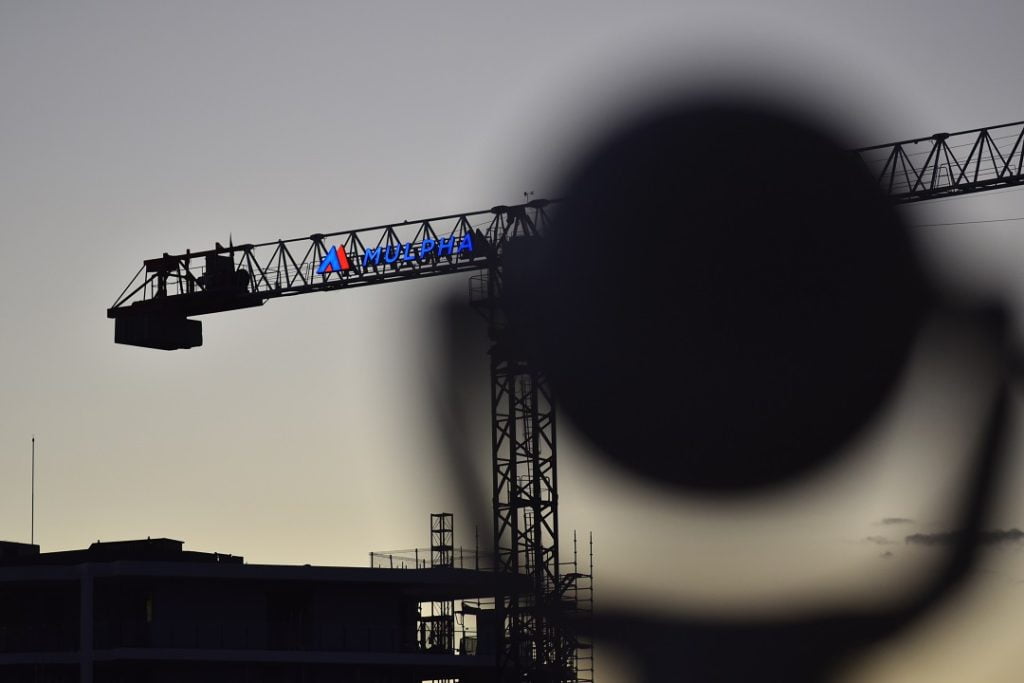
Next comes thermal – a focal plane array uncooled vanadium oxide microbolometer with 640 x 480 pixels, a pixel pitch of 17 microns, a frame rate of <30Hz (9Hz is also available), a lens focal length of 50mm at a fixed fast aperture of F1.2, giving an angle of view of 12.4 degrees wide x 9.3 degrees high. Spectral response is 8-14 microns, thermal sensitivity is <72mK at room temperature with noise reduction. The 50mm thermal camera lens is factory-set to infinity with a focus distance of 84 metres suggesting a hyperfocal distance of around 40m. There’s contrast enhancement, adjustable gain level, brightness level (cd/m), noise reduction and 12 selectable colour modes.
The MIC IP Fusion 9000i has intelligent video analytics and can be set to global VCA or one of 16 profiles. Compression and streaming options are H.265, H.264 (ISO/IEC 14496), MJPEG and JPEG at a range of resolution settings. The data rate at H.265 1080p ranges from 61 kb/s to 2.8 Mb/s, while with H.264 the range is 9.6 kb/s to 6 Mb/s. There’s support for all expected network protocols, including some less common ones, as well as TLS 1.0, SSL, DES, 3DES, AES encryption and typical Bosch, the camera latency is in the spec – it’s 120ms at 30ips and 67ms at 60ips – both these numbers are very good.
There’s support for ONVIF Profile S, ONVIF Profile G, Auto-MDIX, Quality of Service (QoS), setup Via Internet Explorer 7.0 or later, Bosch Configuration Manager, Bosch Video Management System (BVMS), Bosch Video Security Client (VSC), or support for third-party software, there support for cloud-based services, time-based or alarm-based JPEG posting to 4 different accounts, which can be FTP servers, cloud-based storage facilities, email or SMS. Firmware updates can be handled over network using built-in web browser or the Bosch Configuration Manager and control interfaces include RS-485, simplex, half and full duplex, user-selectable baud rate or auto-baud.
At this point the pressure is mounting to start cherry-picking specs for brevity but doing so is not easy. There’s Ethernet High PoE (95 W), RJ45 10/100Base-Tx, male connector, duplex audio with G.711 compression, AAC, and L16 (live and recording), audio signal-to-noise ratio of 47dB in and 50dB out. The PT drive is brushless, pan range is 360-degrees of continuous rotation, there’s a tilt angle of 292 degrees, a tilt range of -56 to +90 degrees, a pan speed of 0.2 to 120 degrees per second, a tilt speed from 0.2 to 90 degrees per second, tracking speeds between 4-120 degrees, pre-set maximum speed of 120 degrees per second.
On the electrical side, the camera consumes 4A VAC or 1.5A High PoE at 72W with heater, defroster and fan operating. There’s built-in surge protection for power, data, and network interfaces. When it comes to alarm control you have rules-based logic that supports basic and complex predefined user-specified commands, monitoring of integrated sensors and monitoring of operational status such as internal temperature, humidity level, incoming voltage level, vibration, and shock events.
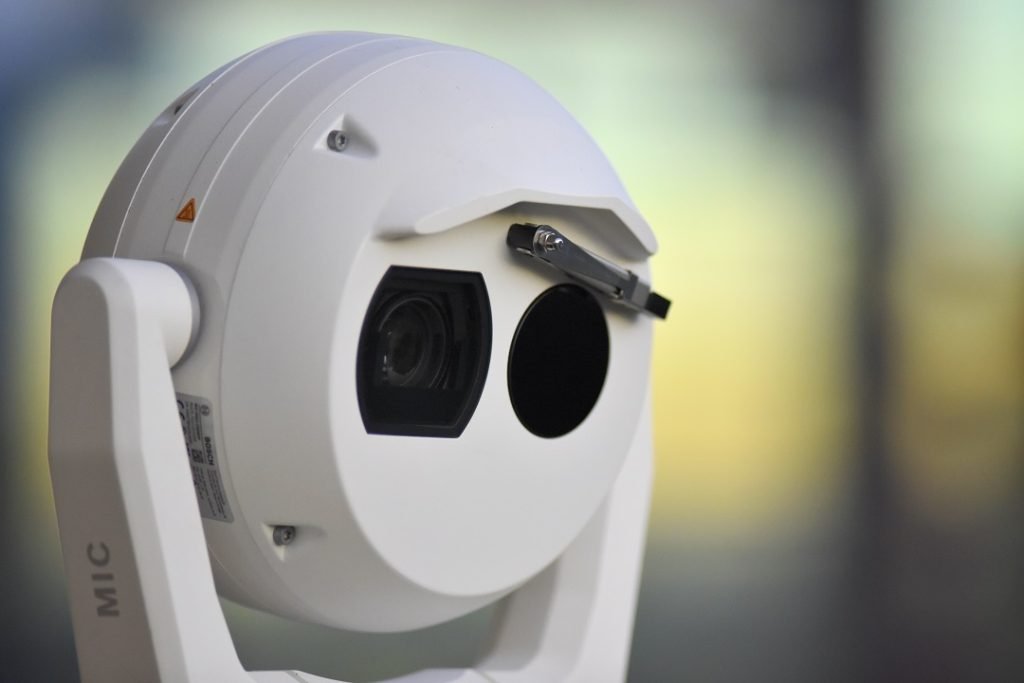
Video authentication options include watermark/MD5/SHA-1/SHA-256, 802.1x Network Authentication with EAP/TLS and support for TLS 1.2 with updated cipher suites including AES 256-bit encryption. There’s stamping of name, time, pre-position title, sector title, compass/telemetry, lens zoom factor, alarm message, custom logo bitmap, 16GB of internal camera memory, 3-level password protection, HTTPS security with authenticated secure uploads, PKI support, SSL support, AES 128 support, 32 zones of privacy masking, 256 presets, 2x 30 minute programmable guard tours and 1 pre-set tour of up to 256 scenes consecutively, and 1 customized with up to 256 user-defined scenes.
The physical specifications are impressive, too. The cast aluminium unit has a chromate-based surface that’s powder-coated and sanded, a housing window of optical-grade borosilicate glass, a germanium thermal sensor, an integrated silicone wiper, an integrated fan and heater, and a defroster embedded in optical and thermal windows with de-icing capability. Dimensions are 421 high x 298 wide x 181 mm deep and weight is 9kg – while the MIC IP Fusion 9000i is larger than the 7000i, it’s still a very compact camera compared to all its competitors.
The body offers IP68/Type 6P (dust and immersion) when installed on a MIC-DCA or on a MIC wall-mount, IP67 (moisture and dust) rating on connectors in the base of the camera when using the IP67 connector kit (MIC-9KIP67-5PK), which is also required when using non-Bosch mounts and IP66 (directed spray) when installed on a MIC-DCA or on a MIC wall-mount. There’s vandal resistance to IK10 (excluding windows) an operating temperature of -40 to 65C – good numbers, those. Wind loading is 160kmph sustained and 241kmph in gusts. The camera is vibration tested to IEC 60068-2-6, Test Fc: Vibration (sinusoidal), 10 m/s² (1g) and shock tested to IEC 60068-2-27.
Test Driving the Bosch MIC IP Fusion 9000i
It goes without saying that when it comes to perimeter detection there’s nothing like thermal – to have the ability to reach deep into a scene across hundreds, even thousands of metres of open space, and to nail intrusion is a quality no ground-based perimeter solution can match at such a low price. Just trenching for the cabling would consume a comparable budget. And that’s the mindset you need to bring to the MIC IP Fusion 9000i. This is a compact perimeter detection and monitoring solution in a PTZ form factor with relentless optical performance supported by an always-on thermal alarm sensor.
The heart of the MIC IP Fusion 9000i is the fusion of metadata from both optical and thermal systems. What is metadata fusion? Operationally, we are talking about video analytics that fuse data from the optical camera and thermal imager. The way Bosch explains it is that operationally, metadata fusion helps users notice things in a scene that need attention. If an event is detected but is not visible in the video stream being watched, an alarm is triggered automatically, a coloured on-screen arrow points in the direction of the event for real time viewing, while users can click an alarm overlay box to watch the video recordings of an alarm event.
To unpick the notion of metadata fusion, consider that metadata is a set of data that describes other data, while fusion involves the melding of different elements of data into a whole. Typically, metadata fusion achieves this by identifying time-based metadata points that correlate between the camera systems, fusing them in software, then making them available for intuitive display via management system. It’s cutting edge stuff from Bosch that allows MIC IP Fusion 9000i to enhance the performance of security operations by adding a proactive element – an ever-alert thermal sensor driving event activation which can be examined in detail using a powerful optical camera.
On top of metadata fusion, the MIC IP Fusion 9000i includes intelligent video analytics which have been engineered to resist the usual false alarm triggers in tough environments – things like moving trees, reflections off water, snow and rain. But it also adds video analytics while the PTZ is moving to the optical side of the unit’s performance. An operator is alerted, and/or the camera’s intelligent tracking feature is triggered, when an object or person moves while the MIC IP Fusion 9000i camera is panning, tilting or zooming.
According to Bosch, the MIC’s heritage is marine applications and over time its functionality has been enhanced to support industrial applications without ever comprising that original ruggedness. If anything, the toughness has been enhanced.
The camera is IP68-rated, vibration tested – it’s not belt-driven as many PT cameras are – so does not miss a beat, even in wind gusts of 240kmph. The whole MIC series is about robustness – not only the robustness of the housing but the mechanisms inside. The testing for vibration, the ASTM B117 salt spray test, the shaking test and all the rest – these tests are intense.
Detection range is another strength, according to Bosch. Application-wise you are thinking perimeter protection with a thermal camera – using it as a sensor alongside an optical camera is the great strength of the MIC IP Fusion 9000i. The optics are great, the picture quality is excellent – bring in thermal, bring in fusion analytics and then the form factor and you have an extremely powerful surveillance tool at your disposal.

We’re conducting this test at the Bosch Experience Centre in Sydney and it’s a perfect application for a camera like this, with big and diverse scenes through 180-degrees. There’s a lake with pedestrians front and centre and on the left-hand side, while to the right there’s a busy hospital carpark with a perimeter road. There are multiple office towers and retail centres and in the far distance, there are major roads visible between buildings, behind them the layers of construction of the new rail line.
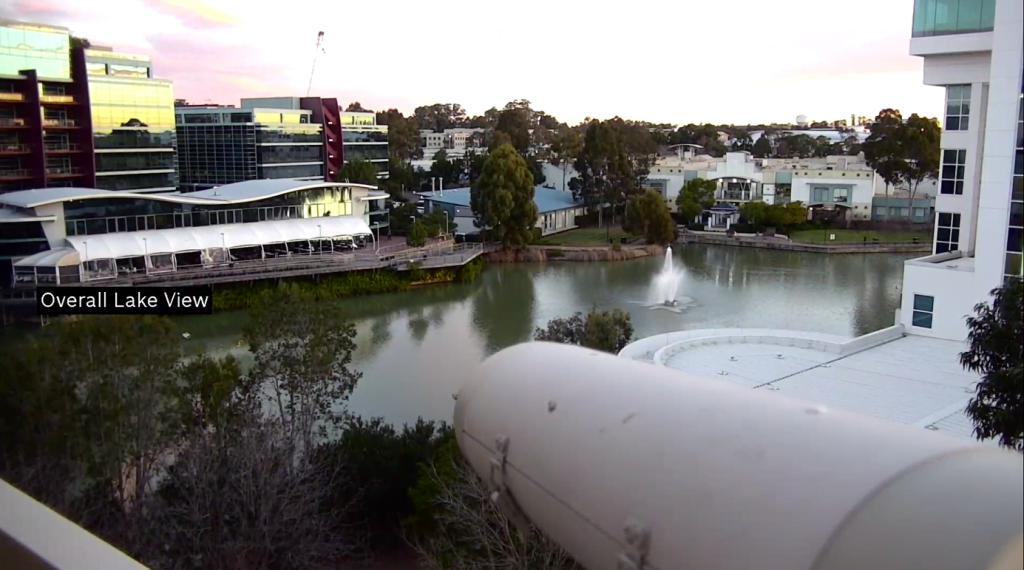
Through the test process we follow pedestrians, joggers, cyclists, a group exercising in the park, diners in restaurants, and visitors on foot and in cars moving around the adjacent hospital. There’s plenty of activity in the afternoon and into the night. It’s hard to be certain of the depth of field – it’s at least 300 metres to the far end of the lake but the overall scene is much deeper – in places the built horizon is pushing out to at least 1000m.
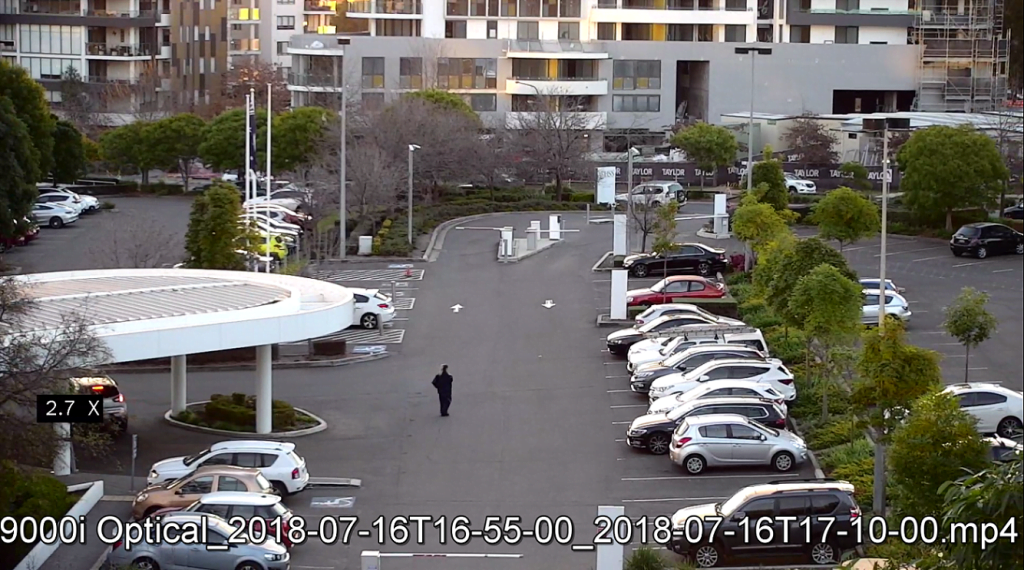
Something else worth pointing out is that this big scene with multiple selectable targets pushes us to examine multiple locations in depth – many of which ask for different settings and for different settings over time. The upshot is that viewing this camera at the Bosch Experience Centre with Hasna tweaking settings and the video analytics undertaking auto calibrations highlights the simplicity of its field operation. I see plenty of ability to duck and weave, which is instructive. A surveillance camera like this has enormous reserves of flexibility, making it ideal for applications with challenges that vary in real time.
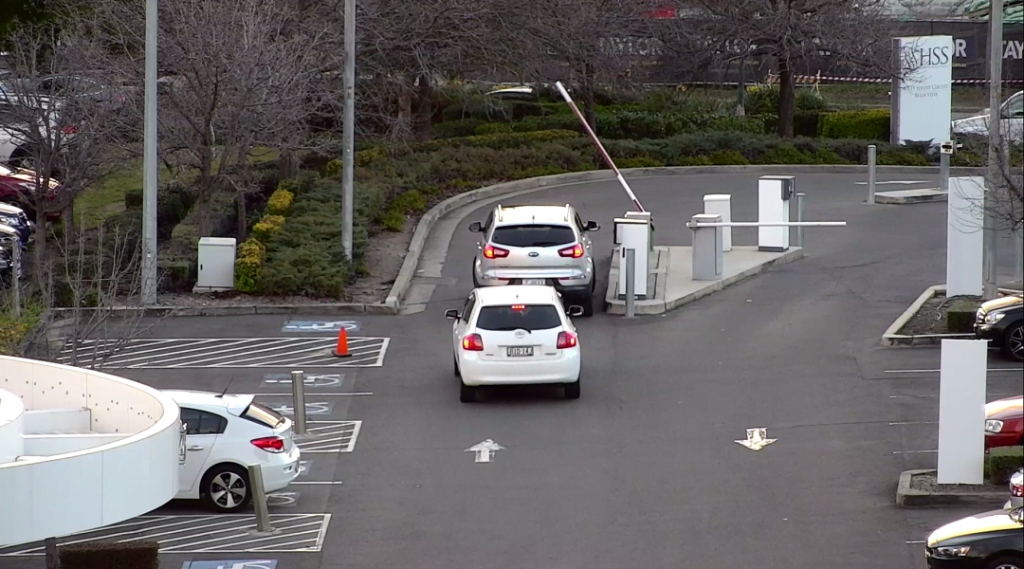
In this application there’s a pre-set around a boom gate, so we can see the way thermal and optical work together. While the 50mm lens on the thermal camera is relatively wide, what happens is that that metadata generated by an event shows on the other camera even if you’re not viewing thermal.
What’s interesting about thermal is that although the angle of view is quite wide and the objects in the scene are small, the analytics are still capable of excellent performance – you get excellent detection over a very wide angle of view supported by a powerful optical PTZ camera. It’s a perfect combination for big, complex sites. The PTZ positioning never misses a beat, even in very strong winds – other form factors could not handle such conditions without impacting on performance.
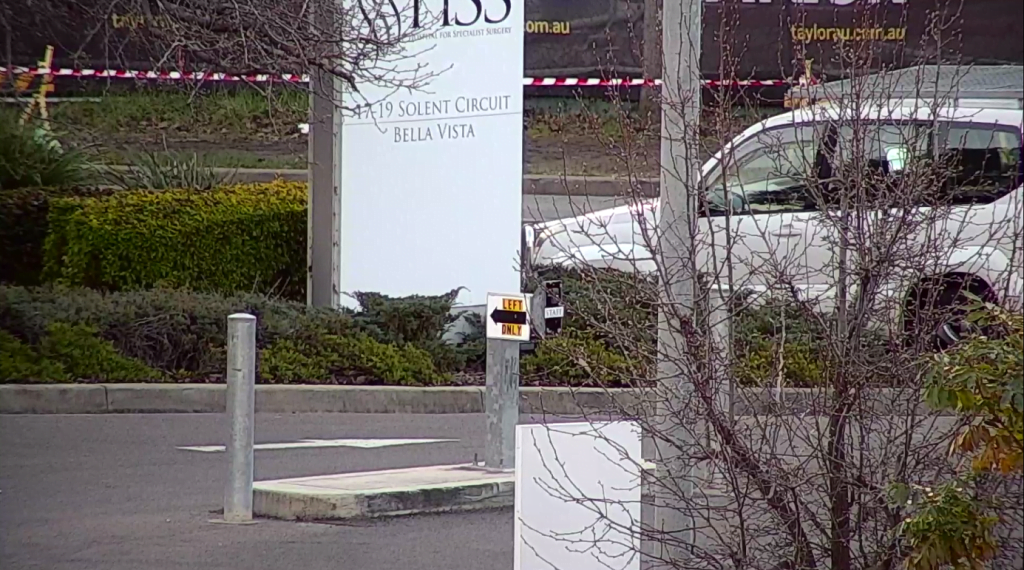
Settings are at default on purpose because the complexity of the scene and our day-into-night time frame means dialling anything into settings is likely to help in one scene and detract in another. Regardless, performance is strong. I notice immediately that the PTZ is very fast to re-focus after pan and tilt movements, which is typical of Bosch cameras. We’re not using a joystick and twist control – that interface would make things much slicker than the mouse and qwerty controls we are working with here.
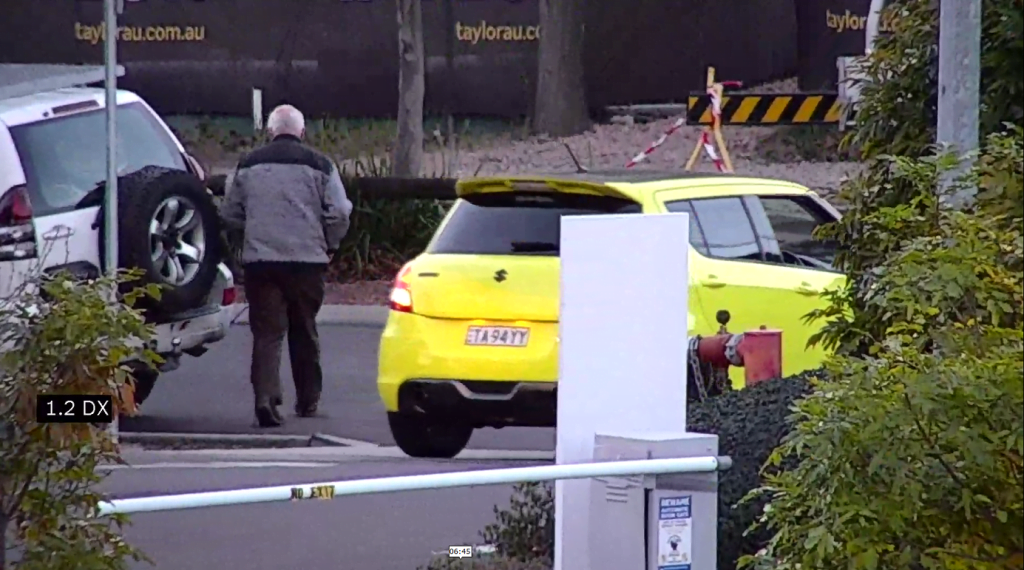
The key thing with the MIC IP Fusion 9000i is the metadata, according to Bosch. If you’re an operator you probably won’t have the thermal up all the time, you’ll be viewing optical image streams but there will always be metadata generated by the 2 cameras.
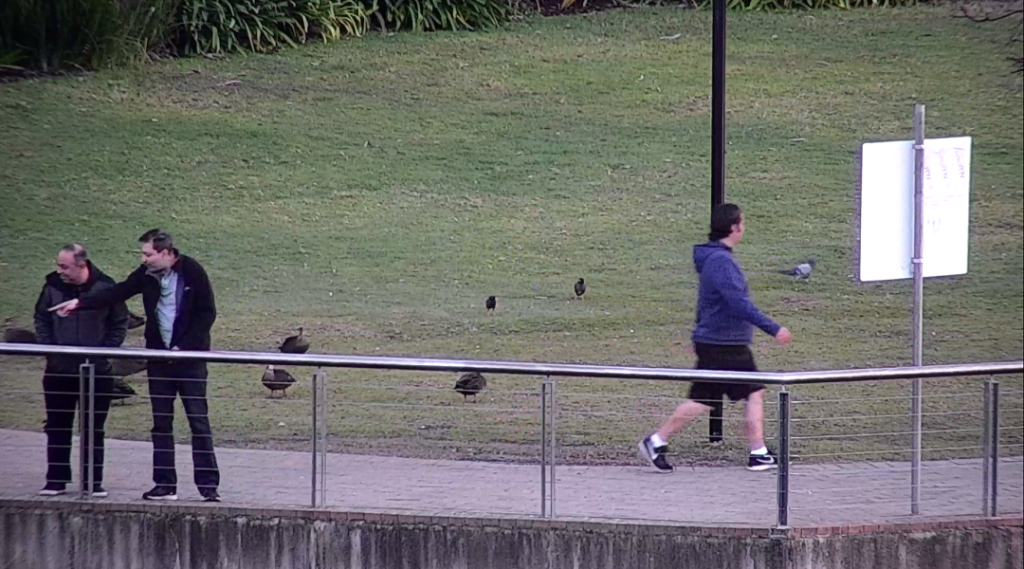
If you’re zoomed in optically and thermal picks up movement in its wider angle of view, then via metadata it will indicate that movement with the appearance of an arrow on the screen pointing in the direction of movement. This works even if no alarm rules are set but if they are set, then the movement indicating arrow will go red, highlighting an alarm event and its direction.
This gives full situational awareness across the entire angle of view of the thermal camera, no matter what the focal length of the 30x optical camera is – no matter what the operator might be examining elsewhere.
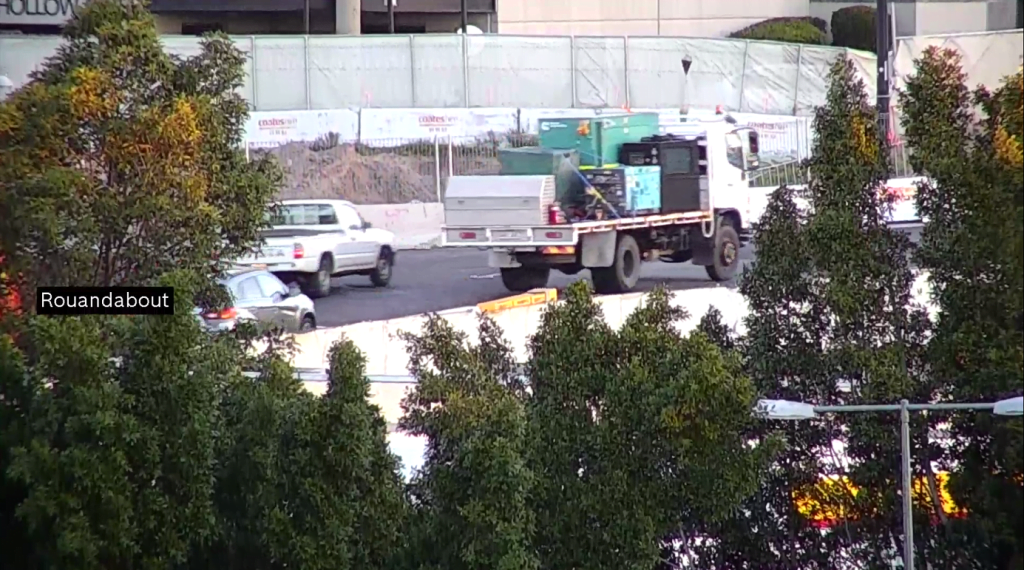
Daytime performance is very strong, which is just as I expected. The scene really allows an operator to make the most of all the digital zoom, to take advantage of compression. PTZ performance is rock solid and the autofocus charges along behind with virtually no latency at all. Such a rare and valuable quality.
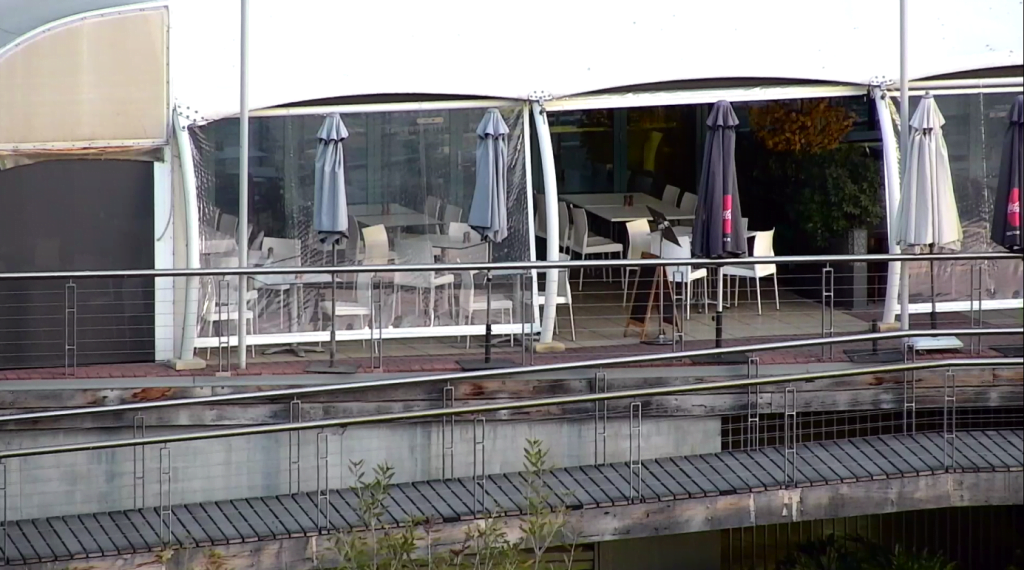
When it’s my turn to driving the MIC IP Fusion 9000i in this big, darkening scene I go too deep with the optical zoom and get utterly lost – when we back out I find I was chasing starlight – we can see it pulsing through the moving layers of Earth’s atmosphere. Night performance as we go day into night is surprisingly good, given the enormity of the scene. The transition is managed very nicely by the MIC IP Fusion 9000i, with no sudden cross-over, no great loss of detail, of colour, or the introduction of noise.
Even at the end of our test in full dark, we’re clinging to general identification and situational awareness at hundreds of metres. Having been out here on the balcony for more than an hour leading up to the point of darkness should have inured me to the MIC IP Fusion 9000i’s performance but it hasn’t, and I keep finding myself re-impressed.
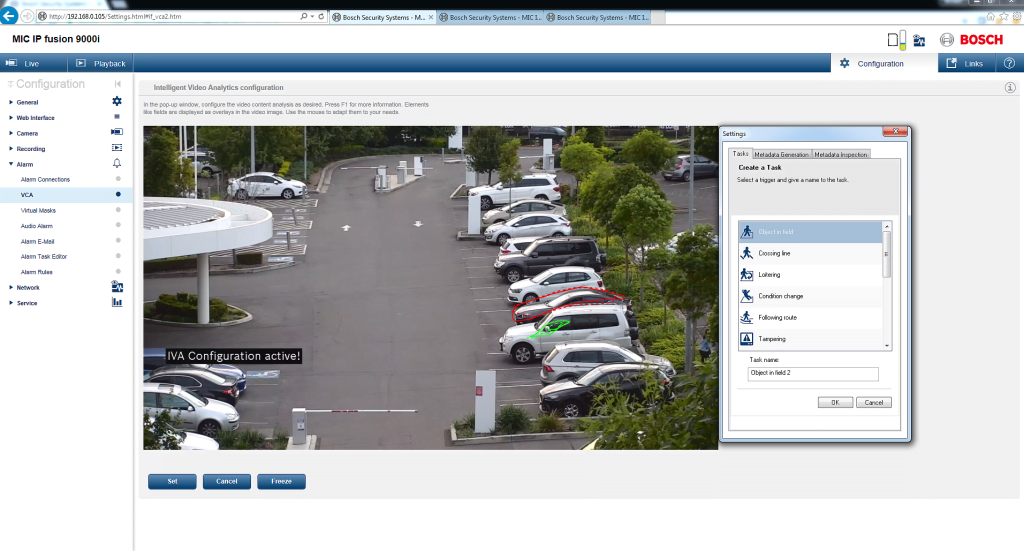
Something I notice at full zoom in full dark is that we don’t get moving plates on the dark-ish road past the hospital carpark and there’s some amplification noise as the aperture closes but there’s still huge detail, although the range is about 150m. It’s possible to reduce amplification noise in settings but I’m ok with amplifcation noise if it gets the details I need by contriving to display tonal variations. It was Sony’s SNC VB770 that changed my mind about noise – yes, there’s noise but there’s a face. Give me noise!
Regardless, it’s worth pointing out most cameras can’t do as well at 12m as the MIC IP Fusion 9000i can at full zoom. At a range of around 125m at night we go for the plate of a car at the boom gate and as we watch a second car drives up behind the first and the powerful reflection from the headlights, combined with the dark background, causes overexposure that denies us our plate. At the same time, I can see a tiny 94.5FM sticker on the first car’s bumper. When the second car gets to the boom gate, we get the plate, easily. Then we try with oncoming traffic and get a Kia number plate coming into the carpark with its headlights on.
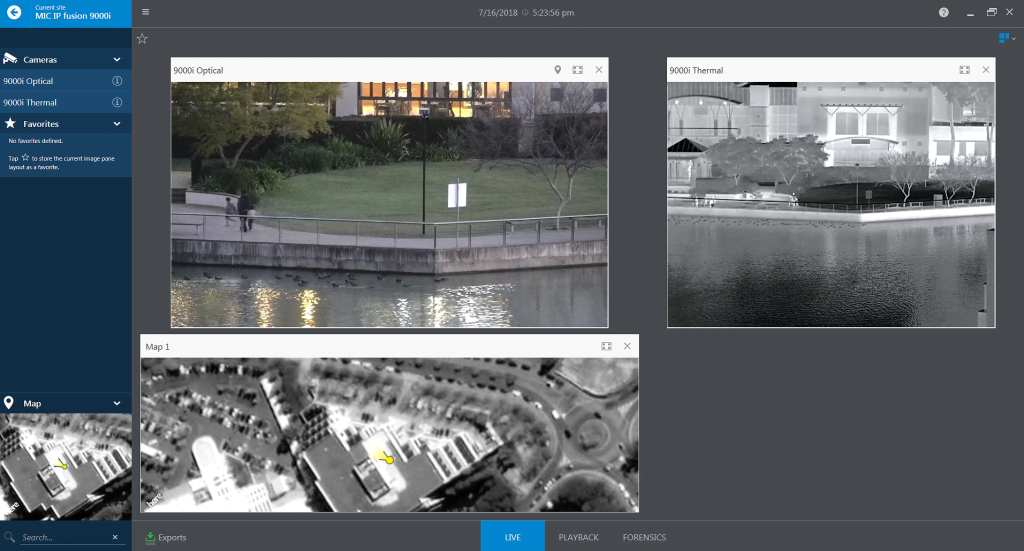
Every environment poses challenges that no camera can overcome – thick shrubs and trees that thermal cannot penetrate – but combining thermal and optical in a powerful form factor like this one is a winner. Anything warm the thermal camera is pointed at we can see. The size of the scene and its dark holes sees us conjecturing over passive light sources like white painted half-walls and planter pots, even white painted patches on pavement that would serve to reflect some of the existing ambient one-directional floodlight back up at faces that are darkened by backlighting and unlit thanks to the dark water of the lake.
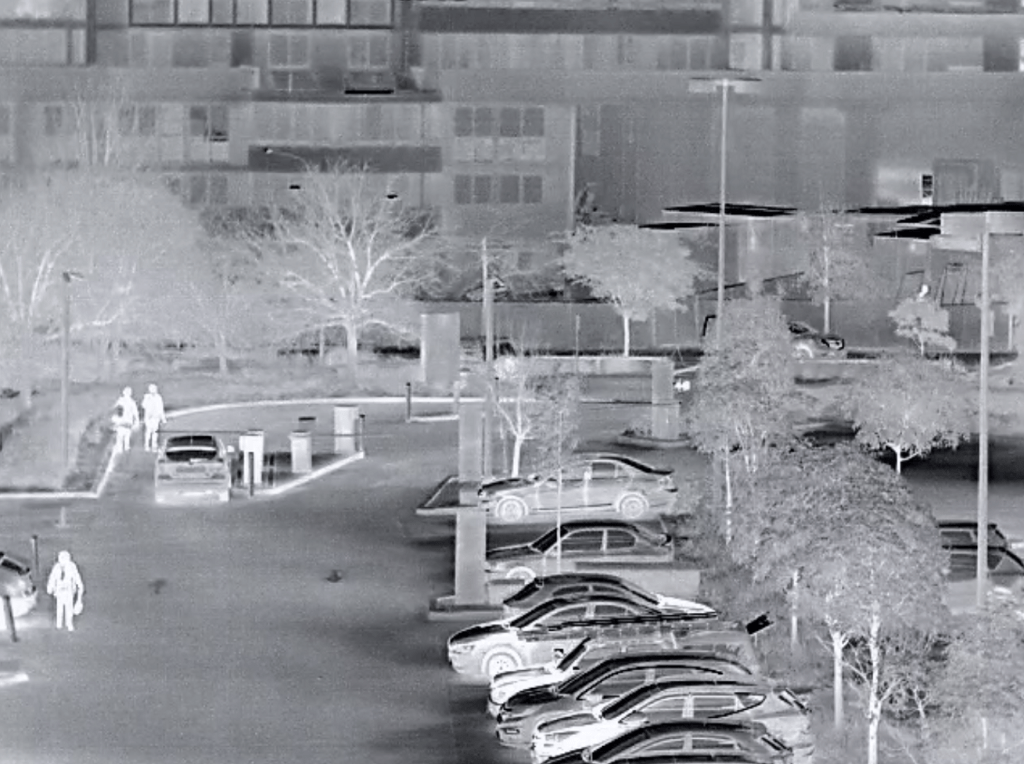
We spend plenty of time looking at thermal performance – you swap from thermal to optical with a mouse-click selection. The 50mm lens is surprisingly wide in a scene this deep with a mounting point so high looking over the water you get surprising levels of detail. Something else that’s sweet is the way the pan and tilt works with the fixed 50mm lens – the hyperfocal distance is not an issue with a thermal camera. Everything we view seems in focus from front to back all the time and you move this relatively wide angle of view around the big scene always in focus. It’s possible to tell details like clothing, gender, gait in the hospital carpark at around 100m using thermal.
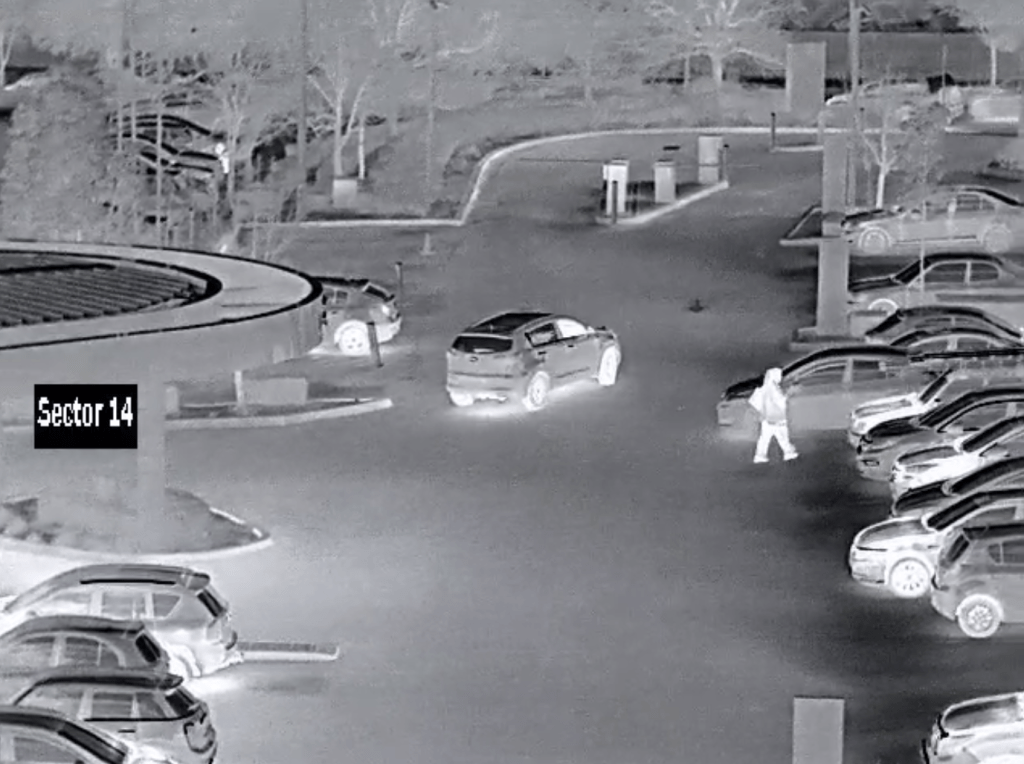
During SecTech Camera Shootout we saw much the same performance from the MIC IP Fusion 9000i. The thermal component acted as a front-to-back sensor, missing nothing through a depth of field of 250m, from one side of the long street to the other. Combined with metadata fusion, this capability means the camera can alert an operator to any movement it sees in a scene that might be missed, no matter how slight. An intruder moving from one bush to another, a jogger who falls, the arm of a hidden smoker poking out from behind a cement pillar. Viewing the hospital carpark, it’s also interesting to see the heat retention in cars that have been parked recently or that have been sitting all day. Of course, another benefit of thermal is no-light ability and the fact it can penetrate smoke, dust and fog.
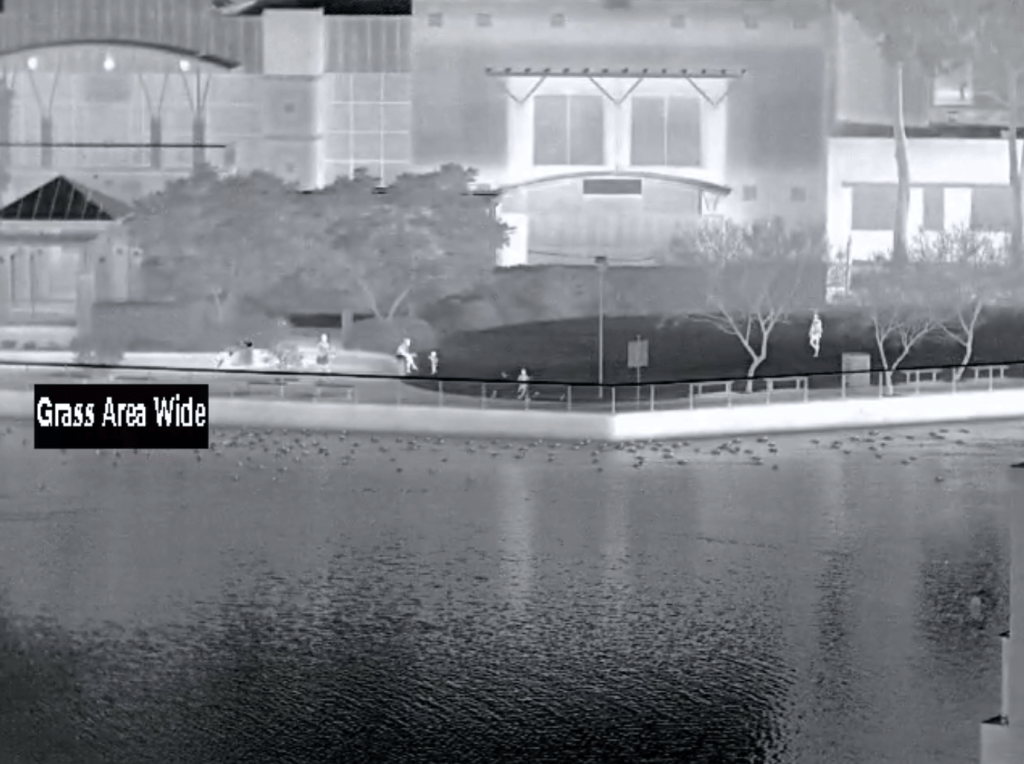
Typical applications for MIC 9000 tend to be large, including ports, airports, mines, corrections, defence, and solar farms. They cover long distances and require perimeter protection – the camera as a detector. Any manned control room can be certain that this camera will ensure operators never miss an intrusion visible to the thermal imager in its field of view, whether they are looking at the monitor, or have selected that same angle of view for optical monitoring.
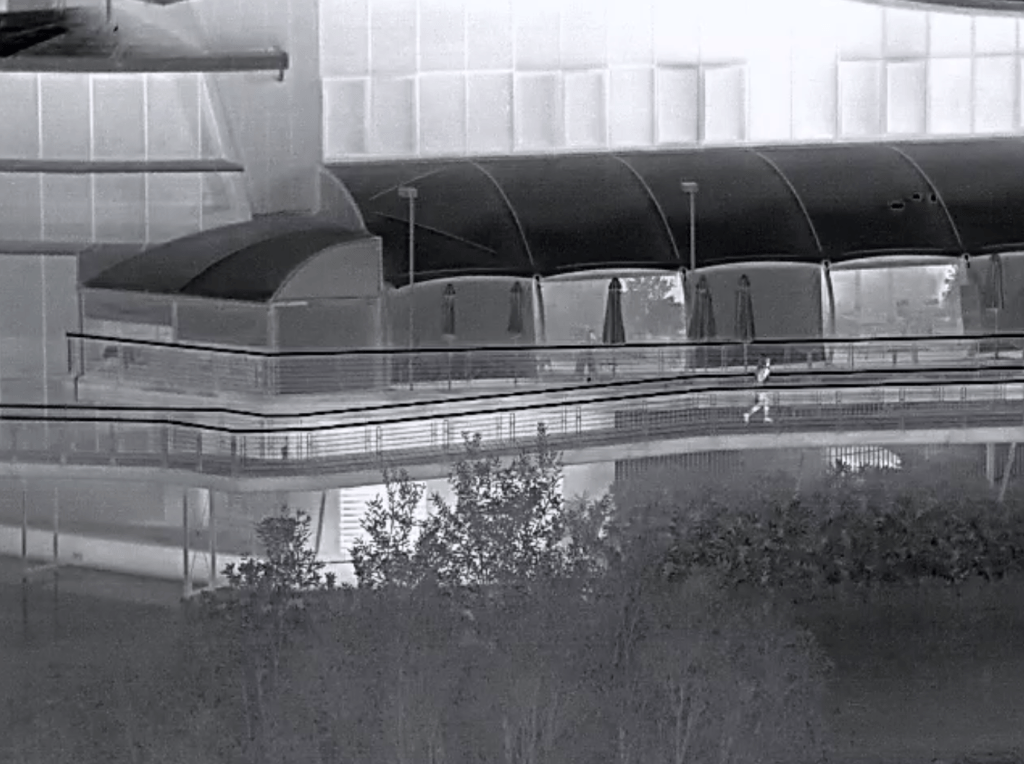
Bosch’s MIC IP Fusion 9000i PTZ is a special surveillance solution that isn’t just designed to deliver operators the best optical camera and the best thermal imaging performance possible in a given application. It goes further, leveraging cutting edge analytics that turn the MIC IP Fusion 9000i into a proactive partner for operators working serious security applications in the toughest environments.



